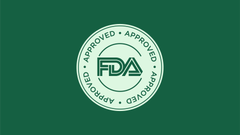azelaic acid
Azelaic acid (Finacea) is a dicarboxylic acid. It's a topical medication used to treat mild-to-moderate rosacea in adults. It works by easing skin redness and inflammation. Azelaic acid (Finacea) is applied to the skin twice daily, in the morning and evening. This medication comes as a gel and foam. Some side effects of azelaic acid (Finacea) include mild burning, tingling, and itching. It's available as brand name and generic medications.

What is Azelaic acid (Finacea)?
What is Azelaic acid (Finacea) used for?
Treatment of papules and pustules in adults with mild-to-moderate rosacea
How Azelaic acid (Finacea) works
Azelaic acid (Finacea) is a dicarboxylic acid. The exact way it treats rosacea isn't well-understood. But it's thought to work by easing skin inflammation.
Drug Facts

Get your GoodRx coupon

What are the side effects of Azelaic acid (Finacea)?
Common Side Effects
- Pain (6%)
- Itching (3%)
- Burning, stinging, tingling (4-16%)
- Itching (1-6%)
- Scaly or dry skin (1-5%)
Other Side Effects
- Dryness
- Redness
- Rash
- Peeling skin
- Skin irritation
Serious Side Effects
- Serious allergic reaction: eye swelling, swelling of the face and throat, trouble breathing, rash, hives
Source: DailyMed
The following side effects have also been reported
Side effects that you should report to your care team as soon as possible:
- Allergic reactions or angioedema—skin rash, itching or hives, swelling of the face, eyes, lips, tongue, arms, or legs, trouble swallowing or breathing
- Burning, itching, crusting, or peeling of treated skin
- Wheezing or trouble breathing
Side effects that usually do not require medical attention (report to your care team if they continue or are bothersome):
- Change in skin color
- Mild skin irritation, redness, or dryness

Pros and cons of Azelaic acid (Finacea)

Pros
Available as a gel and foam
Applied to the skin; convenient for people who don't like pills
Can wear cosmetics after it dries

Cons
Might take months to see improvement
Can cause skin irritation, such as burning or dryness
Can cause skin color to lighten

Pharmacist tips for Azelaic acid (Finacea)

Let your dermatologist know all the products you are considering using or currently using for your skin. Using certain products with azelaic acid (Finacea) can cause or worsen skin irritation. Avoid products that can be too harsh or drying on your skin, such as those that contain alcohol or astringents.
While you're using azelaic acid (Finacea), try to avoid triggers that might worsen your rosacea, such as alcohol, hot drinks, or spicy foods.
More tips on how to use azelaic acid (Finacea)
Before applying azelaic acid (Finacea), wash the area to be treated with a mild cleanser and pat dry with a soft towel.
Avoid applying azelaic acid (Finacea) too close to eyes and mouth, since this can cause irritation. If contact occurs, wash your eyes with large amounts of water. If the irritation doesn't go away, contact your dermatologist.
Don't apply bandages or wraps on the areas of skin where you applied azelaic acid (Finacea). Putting bandages or wraps over the areas might affect how much medication gets absorbed.
Azelaic acid (Finacea) can cause dryness, itching, scaling, or stinging, especially during the first few weeks of treatment. This is more commonly seen in the gel and cream. Speak to your dermatologist if the irritation gets worse or does not go away over time.
If you're using azelaic acid (Finacea) foam, make sure you shake well before use. Safely throw away the bottle 8 weeks after opening, even if there's still medication in it.
If you don't see improvement in your rosacea after 3 months, let your dermatologist know. They might want to talk with you about other options.
You can apply cosmetics over azelaic acid (Finacea) after it dries to give your skin the chance to absorb the medication. If you apply cosmetics before it dries, your skin might not absorb the full dose of the medication.

Frequently asked questions about Azelaic acid (Finacea)

How to save using GoodRx




What are the risks and warnings for Azelaic acid (Finacea)?
Azelaic acid (Finacea) can cause some serious health issues. This risk may be even higher for certain groups. If this worries you, talk to your doctor or pharmacist about other options.

Loss of skin color
Azelaic acid (Finacea) can cause loss of skin color in the areas of skin where you apply the medication. This is because this medication prevents your skin from making melanin, the pigment responsible for skin color. The loss of skin color is more noticeable if you have a darker skin tone. Let your dermatologist know if you notice any changes in skin color.

Eye and mouth irritation
Azelaic acid (Finacea) can cause irritation in the eyes, mouth, nose, and genitals. If it gets in your eyes, wash your eyes with lots of water. Speak to your dermatologist if the irritation does not go away after washing your eye.

Worsening asthma (gel only)
People who have used different forms of azelaic acid, including the gel form, have reported worsening asthma. If you have asthma, it's important to keep your rescue inhaler with you so you can use it in the rare case of an asthma attack. If you've experienced an asthma attack while using azelaic acid (Finacea), let your healthcare team know right away. They can talk with you to see if you should continue treatment or consider other options.

Flammable (foam only)
Azelaic acid (Finacea) (Finacea) foam is flammable because of one of the ingredients in the can. The foam can easily catch on fire. Avoid fire, flame, or smoking during and after using the medication. Don't store the foam bottle where the temperature is too hot (above 120°F). Don't damage or burn the empty foam bottles because it can still leak the flammable ingredient or cause an explosion. Call your local waste management service to see how you can safely dispose of the empty foam bottles.

Azelaic acid (Finacea) dosage forms
Typical dosing for Azelaic acid (Finacea)
Finacea (azelaic acid 15%) foam: The typical dose is to apply a small amount of foam (enough to cover the affected area) to the entire face twice daily, in the morning and evening.
Finacea (azelaic acid 15%) gel: The typical dose is to massage a thin layer of gel to the affected areas of the face twice daily, in the morning and evening.

How much does Azelaic acid (Finacea) cost?

What are alternatives to Azelaic acid (Finacea)?
Treatment of papules and pustules in adults with mild-to-moderate rosacea
Burns
Dandruff
Fungal infections
Insect bites
Other conditions that cause thickened skin (such as ichthyosis vulgaris and pityriasis rubra pilaris)

What is the latest news about Azelaic acid (Finacea)?

Azelaic acid (Finacea) images
Get savings updates for Azelaic acid (Finacea)
Receive price alerts, news, and other messages from GoodRx about Azelaic acid (Finacea) and other healthcare topics and relevant savings offers.By providing your email, you consent to receive marketing communications from GoodRx, which may include content and/or data related to men’s health, women's health, reproductive care, or sexual health. You agree to the GoodRx Terms of Use and acknowledge the Privacy Policy. You can unsubscribe at any time.
References
Best studies we foundAlmirall, LLC. (2024). Azelex- azelaic acid cream [package insert]. DailyMed.
Gollnick, H., et al. (2008). Azelaic acid 15% gel in the treatment of rosacea. Expert Opinion on Pharmacotherapy.
Guangzhou Ariel Biotech Co., Ltd. (2024). 10% azelaic acid acne cream cream [package insert]. DailyMed.
Jones, D. A. (2009). Rosacea, reactive oxygen species, and azelaic acid. The Journal of Clinical and Aesthetic Dermatology.
LEO Pharma Inc. (2019). Finacea- azelaic acid gel [package insert]. DailyMed.
LEO Pharma Inc. (2020). Finacea foam- azelaic acid aerosol, foam [package insert]. DailyMed.
Madireddy, S., et al. (2023). Hypopigmented macules. StatPearls.
Schulte, B. C., et al. (2015). Azelaic acid: Evidence-based update on mechanism of action and clinical application. Journal of Drugs and Dermatology.
Compare other Rosacea drugs
Browse medications
View AllResearch prescriptions and over-the-counter medications from A to Z, compare drug prices, and start saving.








